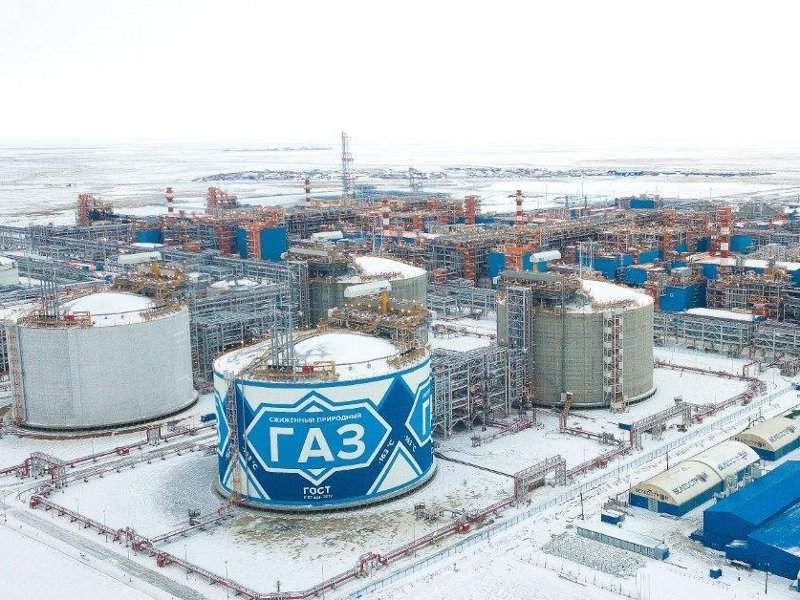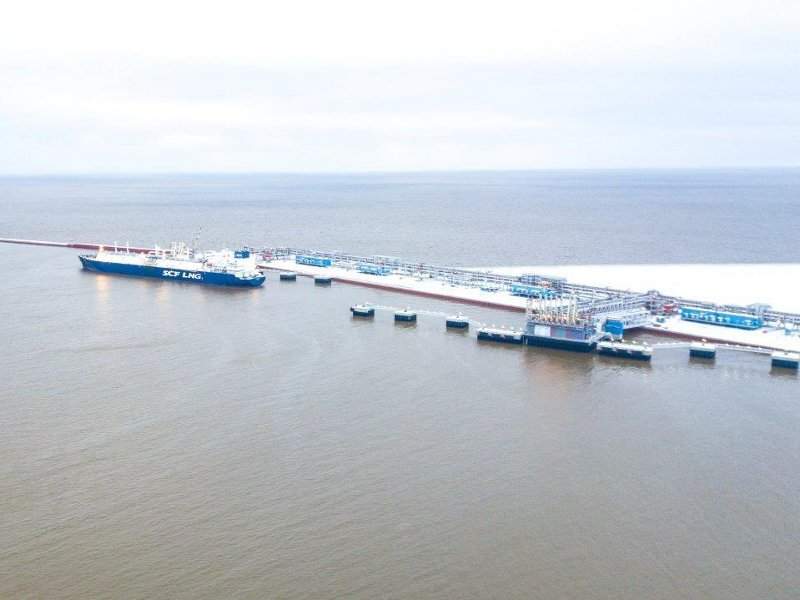Yamal LNG project, also known as the South Tambey LNG project, is one of the world’s biggest and most complex LNG projects. It is located on Russia’s Arctic coast near Sabetta in the Yamal Peninsula.
The $27bn integrated LNG project encompasses the development of the giant South Tambey (Tambeyskoye) gas field, a 17.4 million tonne per annum (Mtpa) LNG plant consisting of four process trains, and shipping facilities at the purpose-built Port of Sabetta, for supplying LNG to the Asia-Pacific and European gas markets.
The mega LNG project is owned and operated by Yamal LNG, a joint venture between Novatek (50.1%), Total (20%), CNPC (20%), and Silk Road Fund (9.9%).
The Yamal LNG facility commenced operation with the commissioning of its first 5.5Mtpa LNG train in December 2017.
Project Gallery
-

Yamal LNG project is located near Sabetta on the Yamal Peninsula, Russia.
-

Yamal LNG uses custom-designed ARC7 ice-class LNG carriers. Image courtesy of NOVATEK.RU.
-

The Yamal LNG facility commenced operation in December 2017. Image courtesy of NOVATEK.RU.
-

LNG from the Yamal project is supplied to Asia-Pacific and European markets from the Port of Sabetta. Image courtesy of NOVATEK.RU.
It further achieved 16.5Mtpa production capacity with the launches of its second and third LNG trains in July 2018 and November 2018, respectively.
Yamal LNG delivered a cumulative 7.4 million tonnes (Mt) of LNG with the offloading of its hundredth LNG cargo in December 2018.
Construction of a smaller scale LNG train of 0.9Mtpa capacity is currently underway, which is expected to be brought on stream by 2020.
Yamal LNG project development history
The Russian Government approved an extensive plan to develop an LNG production and export facility on the Yamal Peninsula to tap the vast gas resources of the country’s Far North in October 2010.
Situated in a remote location above the Arctic Circle without any access routes to the site by land or by sea, the Yamal LNG project necessitated the development of a transportation hub comprising the Port of Sabetta and the Sabetta international airport.
Construction of the seaport and the airport started with the Russian Government support in 2011.
Russia's state-run survey organization Federal Autonomous Institution Glavgosexpertiza (FAI Glavgosexpertiza) approved the design of the integrated LNG complex in March 2013.
The project was granted construction permit by the Subsurface Management Department of the Yamal-Nenets Autonomous Region in the same month.
Engineering, procurement, and construction (EPC) contract for the LNG project was awarded in April 2013.
Module deliveries for the LNG facility construction started in September 2015.
South Tambey gas field development details
The Yamal LNG project depends on feed gas supply from the on-site South-Tambey field, which is estimated to hold proven and probable reserves of 926 billion cubic meters (bcm) of natural gas and 30Mt of condensates.
The onshore field has the potential to produce up to 27bcm of natural gas a year for a period of at least 20 years.
The South-Tambey field development plan includes the drilling of 208 directional production wells with horizontal completion from 19 well pads.
The project uses the specially-built ARCTICA drilling rigs to ensure high drilling performance in the harsh climate conditions of the Yamal Peninsula. Hydrocarbon-based drilling fluids are being used for well completion.
A total of 126 production wells were completed and four drilling rigs were in operation at the field by the end of the third quarter of 2018.
Yamal LNG plant details
The hydrocarbon flow from the production wells is fed via a gas gathering network to the integrated gas treatment and liquefaction facility at the South-Tambey field.
The hydrocarbon mix is first processed for water, methanol and condensate removal at the gas treatment facility that also houses methanol regeneration and condensate stabilization units.
The separated gas is sent to the liquefaction process trains, where it undergoes acid gas and methanol removal, dehydration, mercury removal, and LPG extraction, before being pre-cooled in the propane cooling loop.
The natural gas liquefaction finally takes place in the mixed refrigerant loop. The produced LNG is stored in cryogenic tanks before offloading to LNG carriers for shipping.
The Yamal LNG plant currently has three 5.5Mtpa liquefaction process trains in operation, while a fourth train of 0.9Mtpa capacity is scheduled for launch in 2020.
The facility also houses four cryogenic LNG storage tanks of 160,000m³ capacity each, an LPG fractionation facility, stable gas condensate and refrigerant storage facilities, and a 376MW gas-fired power generation facility.
LNG tankers for the Arctic project
The Yamal LNG project will use up to 15 custom-designed Russian arctic classified ARC7 ice-class LNG carriers for year-round shipping to international markets.
The 300m-long 172,600m³ LNG carriers can sail at a speed of 19.5kts in open water, and at 5.5kts in 1.5m-thick ice, without icebreaker support.
Yamal LNG was operating seven such vessels as of November 2018 and was expecting the delivery of three more vessels by the year-end. The remaining five vessels are expected to be commissioned in 2019.
Infrastructure facilities for the Yamal LNG project
The shipping infrastructure for the Yamal LNG facility includes an LNG and gas condensate offloading jetty with two tanker loading berths, rolling cargo berths, material offloading facilities and port fleet berthing facilities at the port of Sabetta.
A 2km-long ice barrier has been constructed to protect the port harbor.
The international airport built for the Yamal LNG project features an ICAO category-I airfield with a 2,704m х 46m runway, a passenger terminal, and an international flights area. The airport is operated by Sabetta International Airport, a wholly-owned subsidiary of Yamal LNG.
Financing for the Yamal LNG project
The Yamal LNG project is financed by National Welfare Fund of Russia, Sberbank, Gazprombank, China Development Bank, the Export-Import Bank of China, Japan Bank for International Cooperation (JBIC), as well as a group of European banks including Raiffeisen Bank International and Intesa Sanpaolo.
The insurance coverage for the credit line facilities is provided by European agencies including the Italian export credit agency SACE, the French export credit agency COFACE, the Swedish export credit agency EKN, and the German export credit agency Euler Hermes.
Contractors involved
A joint venture of Technip, JGC, and Chiyoda was selected as the EPC contractor for the Yamal LNG facility in April 2013.
Aker Arctic provided the outline design and vessel performance evaluation services for the ice-breaking LNG carriers for the project.
Daewoo Shipbuilding & Marine Engineering was contracted for the construction and delivery of up to 16 ARC7 ice-class LNG carriers in July 2013.
VINCI was awarded the contract to supply four cryogenic LNG storage tanks in January 2014.
GE supplied six Frame 7E gas turbines, 18 centrifugal compressors, six variable speed drives, and six waste heat recovery units (WHRUs) for the Yamal LNG trains.
Technopromexport was the construction contractor for the power plant for which Siemens provided eight SGT-800 industrial gas turbines.
Atomflot was awarded a long-term port fleet services contract involving tug and icebreaker assistance at the Port of Sabetta in November 2014.
Atomflot subcontracted Vyborg Shipyard for a 10MW diesel-powered harbor icebreaker in April 2015.
Chicago Bridge and Iron Lummus (CBI Lummus) carried out the pre-FEED and FEED studies for the Yamal LNG project.
